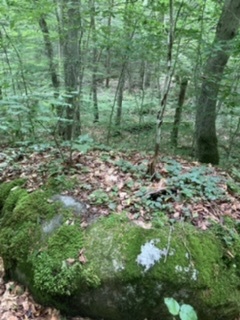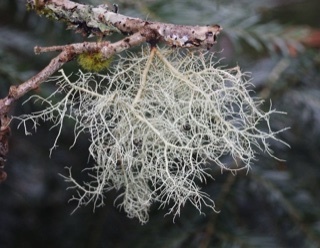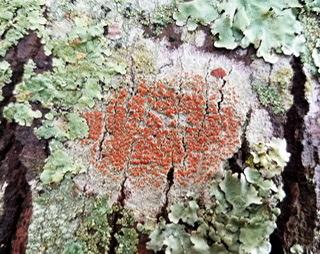The coordinates of this cache WILL NOT BRING YOU TO THE CACHE ITSELF but rather, they will bring you to the following feature along the stony creek pond trail. To find the cache you will need to answer the following question and enter it into the puzzle checker at the end to obtain the final coordinates.
which of the 3 types of lichen are found in the Adirondacks? There are 3 potential ways to answer this question but only 1 possible answer.
Like so much of the forests in the Adirondacks, this trail, it's tree's, rocks, footbridges and so forth are covered in various types of lichen. Lichens, though most people don't often think too much about them, play a vital role in overall forest health and contribute greatly to their local ecosystems. The photo below (and this location) are just 1 of several examples along the trail of trees growing in impossible places. These trees are capable of growing in such impossible places almost entirely because of lichens.

These 2 trees growing atop a rock are just 1 of many examples along this trail of something you might see quite often but probably never think about, which is how does this occur?! In order to receive nutrients, trees (in general) root down into the soil and absorb water and various minerals that way as well as photosynthesizing the energy from the sun...so how do roots get their nutrients when they can't reach the ground? Roots also provide stability to a tree, preventing it from falling over or being blown down during a storm...so how can these young trees whose roots don't touch the ground even survive up here on this rock? Maybe you've wondered these things before, and maybe you haven't. Either way, the answer to these questions (as well as many other questions relating to the forest) lies in the lichen. Lichens both break down rocks with acids (thus making space for tree roots and other plant life to sprout) but also turn those rocks into minerals which they are able to share with other organisms through symbiotic relationships. I chose this example, instead of larger, older and more pronounced examples specifically because the 2 trees growing on the rock are so young and their roots have not grown nearly long enough to reach the ground, let alone draw nutrients or water from the soil therefore making the relationship between the 2 more obvious and necessary. Older, more established trees have to rely much less on lichen for their survival than younger trees do.
What are lichen you say? And why do you care?
Lichens are among the hardiest and most resistant of all plant organisms on earth!! These primitive plants can stand long periods of drought, incredible heat, and freezing temperatures, making it possible for them to live where nothing else can. They have also recently been determined as a means by which one can measure the overall health as well as the age of a forest.
These plants, with no stems, roots, or leaves, are actually a combination at least two (sometimes 3) different organisms; an alga (a plant) and a fungus. The alga manufactures the food for the partnership, while the fungus, which has no chlorophyll and cannot manufacture its own food, traps the moisture and anchors the plant to a rock, tree, or the ground (it also breaks down rocks into usable minerals which can then be transferred to its plant partners). 20% of fungal species live in lichen.
Because the 3 types of organisms that compose a lichen come from 3 different kingdoms, their classification is often difficult and confusing so we will focus here more on the 3 main types of lichen:
- Foliose- Foliose lichens have two easily distinguishable sides. In other words, there is a top side and there is a bottom side. They can be very flat, leafy like lettuce, or convoluted and full of ridges and bumps.

- Fruticose -Fruticose lichens can be pendant and hair-like, upright and shrubby, or upright and cup-like. Many fruticose lichens have round branches that have a central core and others are hollow in the middle. Other fruticose lichens have flat branches that tangle up with each other.

- Crustose- Crustose lichens are just that, crusts. They form a crust over a surface, like a boulder, the soil, a car, or your roof shingles. They can come in many bright, vibrant colors like sunny yellow, orange, and red, as well as grays and greens. Crustose lichens are pressed against their substrate.

Now that you know a little more about lichens, their awesomeness and how they help trees grow atop rocks, you must answer the following question to obtain the final coordinates for the cache itself :
Which of these 3 types of lichen are present in the Adirondacks?

There is an unactivated trackable for FTF